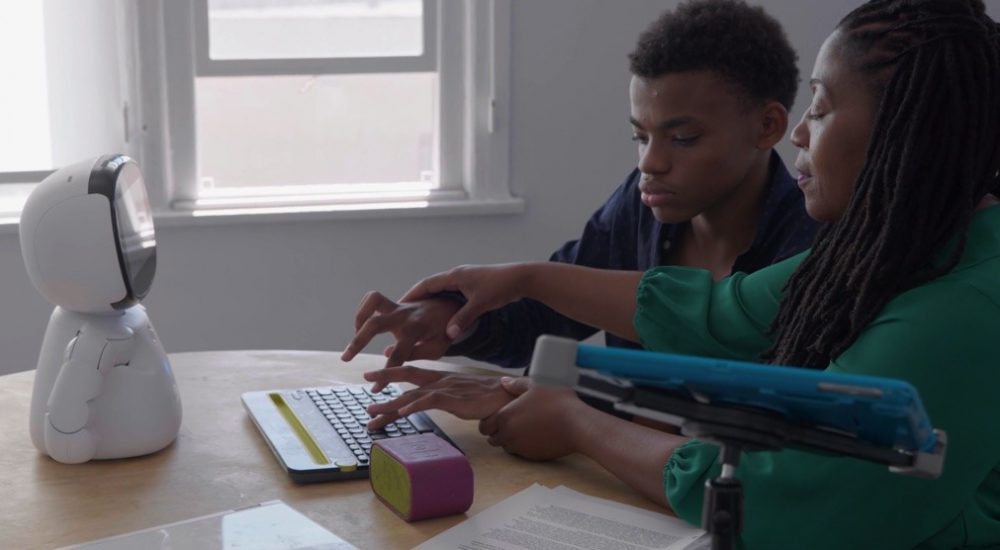Many parents of children with Autism may have heard labels such as sensory integration dysfunction, sensory overload, sensory sensitivity, sensory seeking behavior, and sensory processing disorder. With so much information floating around, there can be confusion as to what these terms mean and how they relate to Autism. Sensory sensitivities and differences in sensory response are a symptom of Autism Spectrum Disorder (ASD) and in 2013 were added to the Diagnostic and Statistical Manual of Mental Disorders (DSM-5) as a diagnostic criterion. The prevalence of sensory processing disorder in people on the Autism Spectrum is estimated to be roughly 69% to 93% in children and adults (Baranek et al., 2006). It is important to note that a person can have sensory deficits, and/or sensory processing disorder, and not be diagnosed with Autism Spectrum Disorder.
You may be wondering what exactly is sensory processing disorder? Let’s break it down a bit. Sensory integration is the innate ability to put together information that is coming from the senses to better help the mind and body navigate and participate in everyday activities. Sensory integration focuses on the primary senses including tactile, auditory, visual, gustatory (taste), olfactory (smell), as well as vestibular (movement and balance), and proprioception (spatial and positional awareness). Sensory overload can occur when one or more senses are overstimulated by a trigger in the person’s environment. Sensory processing disorder (SPD) is the inability to cope with such input and can be accompanied by discomfort and/or overwhelm. Although SPD is not listed as an official diagnosis in the Diagnostic and Statistical Manual of Mental Disorders (DSM-5) manual, it is still widely used to classify both children and adults who have difficulty regulating their sensory systems.
When a person is unable to process or regulate input to their sensory system, he/she may react in an atypical or negative way. This irregularity can be grouped into two categories: hypersensitivity (extreme) and hyposensitivity (low).
A child that is hypersensitive will be easily stimulated by sensory input. The child may have a low tolerance to pain, have coordination or balance issues, be a finicky eater, and/or have food aversions. A hypersensitive child will find that certain sights, sounds, textures, and bright lights may cause agitation or discomfort. In some cases, clothing can become an issue for a hypersensitive child. This oversensitivity will cause changes in how a child responds and behaves. A child who is hypersensitive may only eat one type of food and refuse others. They could throw a tantrum or cover their ears or eyes in loud or bright environments; they may flap their arms and hands or rock back and forth in an attempt to soothe themselves.
On the contrary, a hyposensitive child will typically seek out more stimulation. They may appear totally unresponsive to food textures, loud noises, and bright lights. A child may have a high tolerance for pain, put themself in danger, or crash into things, and may fail to respond to extreme temperatures. They will likely not understand the need for personal space, boundaries, or know what is socially appropriate. They may have a constant need to touch things or people and can generally be unaware of being messy or having dirty hands. Some may frequently put objects in their mouth, or chew on inedible items. These behaviors can be challenging for both child and parent especially in public environments where the incoming stimuli cannot be altered or controlled.
Families with an affected child may find it difficult to get help for sensory processing disorder. Currently, there is no cure or specific treatment for SPD, however, occupational therapy and other remedies aimed at sensory integration are recommended. Recently, sensory toys, tools, exercises, de-escalation corners, and even sensory rooms have become quite popular in modern classrooms, homes, and therapeutic settings. Sensory rooms are created specifically to provide an immersive experience for children on the Autism Spectrum and for those with SPD and are aimed at helping children manage the behaviors associated with sensory sensitivities. These environments are designed to provide a calming effect, improve focus, lessen anxiety, and help children regulate their systems through de-escalating strategies and methods. Tools can include but are not limited to, modified seating, yoga balls, swings, weighted blankets, stacking pillows, fidget toys like squishy balls, spinners, poppets, chewing sticks, and other tactilely focused toys. Gentle lighting, calming music, pleasant scents, and muted colors are typically incorporated as relaxation is an essential part of sensory integrated environments. Some targeted tablet games and learning devices like MOVIA Robotics’ HomePal system can provide a way for children to direct their focus on particular stimuli. For example, MOVIA’s HomePal system has a ‘popping bubbles’ game. This activity redirects the child’s attention towards the adorable Kebbi robot, thus allowing them to relax and focus on popping bubbles on the screen. HomePal is also perfect for those children who are under-stimulated as it provides many engaging and educational games and activities.
There are many benefits to incorporating sensory rooms as part of your child’s treatment plan. Most importantly they help provide a necessary ‘brain break’ for those with ASD and SPD and help to regulate nervous systems so your child can continue to learn and participate regularly in daily routines. It is essential to implement tools and activities that are specific to the person, as it is common for individuals on the spectrum or with sensory processing disorder to have more than one area of need. When creating a sensory space at home for your child, it can be helpful to narrow down your choices by determining your child’s unique needs first and then choosing which tools and methods would best suit those needs.
*Baranek GT, David FJ, Poe MD, et al. Sensory Experiences Questionnaire: discriminating sensory features in young children with autism., developmental delays, and typical development. Journal of Child Psychology and Psychiatry. 2006; 47(6): 591-601.

